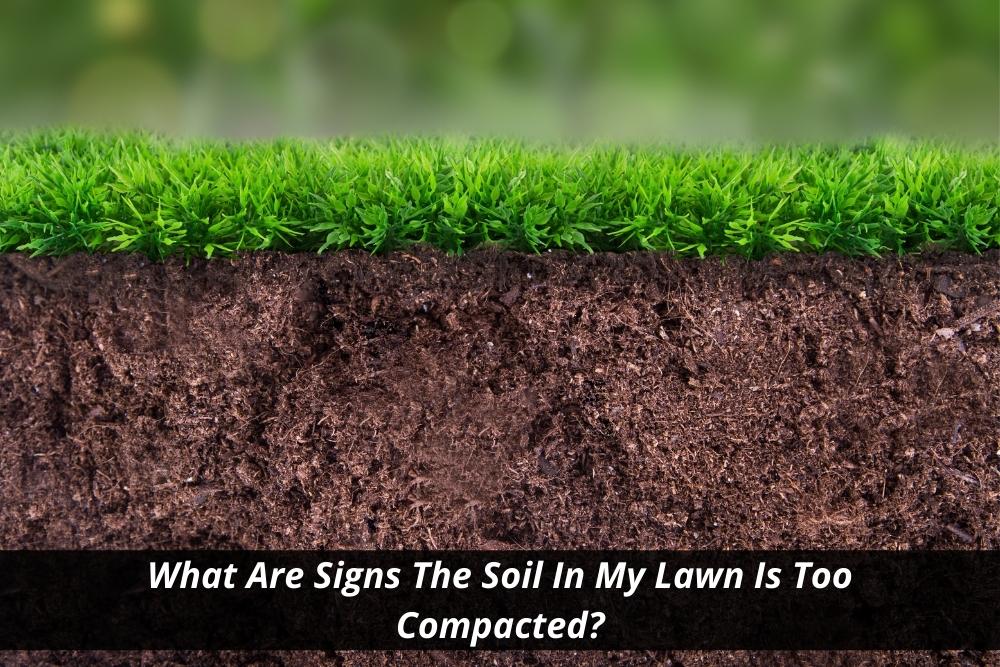Turf laying services in A1 Gardening will help you if you’re having trouble growing grass or flowers in your yard, the soil may be too compacted. Compacted soil is stiff and doesn’t allow water, air, or plant roots to penetrate it effectively. This can lead to problems with drainage and nutrient uptake. In extreme cases, the soil may even erode away.
Fortunately, there are several things you can do to loosen up compacted soil. In this blog post, we’ll discuss the signs that your soil is too compacted and give you some tips on how to fix it. Soil preparation is key to a healthy lawn, so read on to learn more!
What is soil compaction and how does it occur in lawns?
Soil compaction is a condition where the soil is tightly packed together, preventing air and water from infiltrating. This can happen due to a variety of reasons, including home construction, heavy foot traffic, or even just organic matter decomposing in the soil. Clay soils are particularly susceptible to compaction because they don’t drain well and tend to hold water.
Lawns can suffer from compaction for a variety of reasons. Heavy rains can cause puddles of water to form on the lawn, which can compact the soil underneath. This is a problem because it stops oxygen from reaching the grassroots, and the root system can’t grow properly. Additionally, compacted soil doesn’t allow water and nutrients to penetrate, which can lead to problems for your lawn.
Soil compaction occurs when excessive amounts of weight are placed upon the soil. If the soil becomes excessively dense, it may prevent proper water drainage and lead to root damage. Compacted soil can cause problems for both homeowners and landscaping businesses alike. Signs of severe soil compaction include the following:
Cracked topsoil
If you’ve noticed cracks in your topsoil, it could be a sign of compaction. Compacted soil doesn’t allow for proper water infiltration, which can lead to issues with your lawn, including puddles of water on the surface and problems with the root system.
Increased water runoff and flooding
With the current state of the climate, increased water runoff and flooding have become a problem for many homeowners. Heavy rains can cause extensive damage to your lawn, as the soil is compacted and unable to absorb the water. This can lead to puddles of water on your lawn, which can drown grassroots and prevent your grass from growing.
Root damage
Root damage is a serious problem for your lawn. It can stop the grass from growing and cause puddles of water to form on your lawn.
The roots of your grass are important for two main reasons: they help to aerate the soil and they help to hold water and nutrients in the soil. Without healthy roots, your lawn will suffer.
Weeds that have grown in excess of normal depth
Weeds are often the bane of a gardener’s or homeowner’s existence. They can take over flower beds, crowd out desirable plants, and generally make a mess of things. But what if your weeds are growing in excess of normal depth? This can actually be a problem for your lawn.
The roots of most weeds are relatively shallow, so they don’t compete well with the deeper roots of grasses. But if a weed is allowed to grow too deep, its roots can start to crowd out the roots of your grass, causing problems for your lawn.
Deep-rooted weeds can also be a problem during heavy rains. Their deeper roots can help hold puddles of water on the surface of your lawn, which can lead to problems with water infiltration and compaction.
A lawn that does not appear green but brownish-green
This happens when the grassroots cannot grow deep into the ground because the pore spaces in the soil are filled with water and air. The roots need these pore spaces to access water and nutrients.
To determine if your soil is indeed over-compacted, simply dig a hole deep enough to reach at least 6 inches below the surface. If the soil is packed down tightly, it should easily pop back out. If the soil is loose, then you know that your soil isn’t compacted.
Tips to help you determine if your yard is suffering from soil compaction
One of the major problems with compacted soils is that they restrict water movement to roots and make them difficult to get oxygen to. In addition, they hold onto any excess moisture and prevent fertilizer applications from getting down to where they are needed most. Unfortunately, many people don’t even realize that their lawn has become compacted until it’s too late and the damage has already been done. Here are some tips to help you determine if your yard is suffering from soil compaction.
- If you’ve ever noticed that your grass seems to only have shallow root systems, then they probably need extra TLC. You may want to dig out around the base of your plants to increase air circulation and allow for deeper rooting.
- If your grass is browning or dying at the edges, try adding compost or garden material to create healthier turf. While this may seem counterintuitive, it actually helps the grass take in nutrients to help prevent that browning.
- A simple way to test whether your soil has become compacted is to take a walk across your property. If you notice that your feet sink into the ground and feel hard, then chances are good that you’re walking over a compacted area. Try taking off your shoes and feel how much harder it is to move around.
If you find yourself noticing these symptoms regularly, then it’s time to call your local landscaper to provide a solution.
What are some tips for preventing soil compaction on your lawn?
Soil compaction is a major problem for many homeowners. It can stop your grass from growing, and lead to puddles of water on your lawn. There are several ways to prevent soil compaction, and these tips will help you keep your lawn healthy and free of this problem.
Aerating the soil is one of the best ways to prevent compaction. This can be done with a core aerator, which removes small plugs of soil from the lawn. This allows air and water to penetrate the soil and helps to break up compacted soil.
Another way to prevent compaction is to improve the drainage in your lawn. This can be done by adding organic matter to the soil, which will help to hold water and nutrients. It can also be helpful to aerate the soil before heavy rains, to help prevent problems with puddling afterwards.
If you have clay soils, it is especially important to take steps to prevent compaction. Clay soils are very dense, and can easily become compacted by foot traffic or heavy rains. Taking steps to improve the drainage and aeration of your clay soil will help to prevent compaction and keep your lawn healthy.
What are the benefits of turf-laying services?
If you’re looking for a way to improve your lawn’s health and appearance, you may want to consider turf-laying services. This process of aerating the soil can help to alleviate compaction, increase water infiltration and promote healthy grass growth. Here’s a closer look at how turf-laying services can benefit your lawn.
Turf laying services involve piercing the soil with small holes to create pore spaces. This allows air, water and nutrients to penetrate the root system more easily, promoting healthy growth.
Organic matter, such as that found in clay soils, can also help to hold water and nutrients in the soil. This is beneficial during periods of drought or extended dry weather. turf laying services can help to improve the infiltration of water and nutrients into the soil, resulting in a healthier lawn.
foot traffic is another common cause of soil compaction. If your lawn is subject to a lot of foot traffic, turf laying services can help to aerate the soil and reduce compaction. This will promote healthier grass growth and a more attractive lawn.
In addition to improving the health of your lawn, turf laying services can also help to reduce problems associated with puddles of water on the surface after heavy rains. By aerating the soil, water will be able to penetrate more easily and drain away quickly, reducing the formation of puddles.
If you’re interested in improving the health and appearance of your lawn, turf-laying services may be right for you. This simple process can have a big impact on the health of your lawn and is an important part of any lawn care routine.

